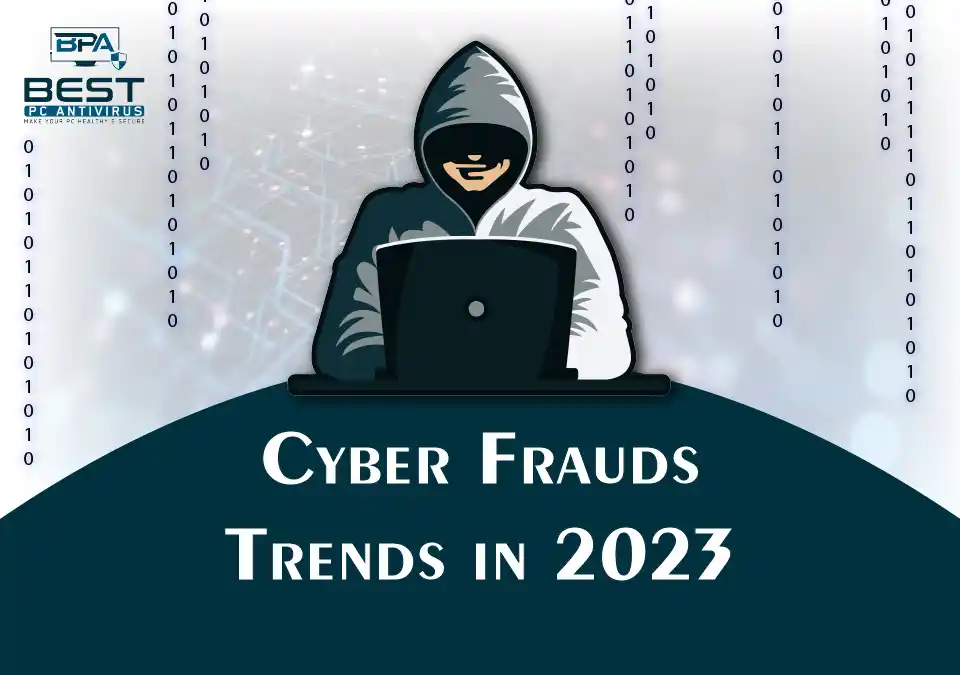The rise of digital technology has transformed the way we live, work and interact. However, along with the benefits of digitalization, there are also new threats that we must contend with, including cyber fraud. As we move into 2023, we can expect to see a number of emerging trends in cyber fraud. From deep fakes that will make our digital identities and DNA vulnerable, to the rise of non-password-based authentication methods and the need for robust security measures to protect against ransomware attacks, these trends are set to reshape the way we think about cybersecurity. In this blog, we will examine some of the cyber fraud trends in 2023 that businesses and individuals need to be aware of.
Deep fakes
“It is only a matter of time before attackers can create lifelike digital avatars of anyone, and it will be incredibly difficult to identify the difference without sophisticated technology to analyse the source data,” said Joseph Carson, chief security scientist at California-based security firm Delinea.
Industry analysts predict that by 2023, deep fakes will be so convincing that in addition to our digital identities being taken, our digital DNAs will also be in danger. By making our digital Genes available online, deep fakes will be able to reproduce and produce digital humans.
Artificial intelligence and machine learning are two examples of cutting-edge technology used to construct deep fakes, which are human impersonations.
People constantly upload images, videos, audio, and other personal preferences to social media in order to keep their online and offline lives in sync.
Malicious QR code
A QR code, short for Quick Response code, is a two-dimensional barcode that can store a large amount of data in a small space. This machine-readable code can be scanned by a smart device, such as a smartphone, using its camera and a QR code reader app. Once the QR code is scanned, it can provide information or take actions based on the data encoded within it.
Cybercriminals can also use QR codes to carry out malicious activities. When a user scans a malicious QR code, it can lead them to a malicious website, which can install malware on their device or steal their sensitive information, such as login credentials or financial details.
Additionally, some malicious QR codes can communicate a user’s location coordinates to a geolocation-enabled application without their knowledge or consent. This can pose a significant privacy risk, as the user’s movements can be tracked and monitored.
It is important to exercise caution when scanning QR codes, especially if they come from an unknown or suspicious source. Users should ensure that they have a reliable QR code reader app installed on their device and be cautious of QR codes that offer unrealistic deals or incentives, ask for personal information, or lead to unfamiliar or suspicious websites.
Supply Chain Threats
The risks associated with supply chains have become more significant than ever before. Attackers have access to a greater number of resources and tools to disrupt supply chains that are vital for the steady supply of goods and services, particularly during pandemics such as Covid-19.
Experts have emphasised that standard security assessments and due diligence performed by chief security officers on third parties are no longer adequate, considering the increasing frequency and impact of supply chain attacks. These attacks pose a considerable threat to businesses, potentially causing significant disruptions to operations, loss of revenue, and reputational damage.
To address this issue, regulatory bodies, such as the EU Network and Information Security Directive 2.0, are requiring companies to conduct more frequent and dynamic assessments of their supply chain risk. These regulations mandate that companies have better control over the access that third parties have to their networks.
Companies must prioritise the implementation of robust supply chain security measures to prevent supply chain attacks from occurring. Such measures can include, but are not limited to, conducting risk assessments, implementing strong cybersecurity protocols, regularly monitoring and updating supply chain security, and ensuring third parties adhere to strict security standards. Failure to take appropriate measures to secure supply chains can lead to severe consequences for businesses and their customers.
Personal Password
According to experts, the rise of non-password-based primary authentication could potentially bring an end to personal passwords in 2023 and beyond. As more applications begin to adopt advanced non-password technologies, such as biometrics, they will move away from traditional password-based authentication methods.
These non-password technologies may involve directly authenticating users using biometric data or using biometric technology, such as Microsoft Hello, Apple FaceID, or TouchID, to authorise access to an application.
Using biometrics as a form of authentication provides several benefits, including enhanced security and convenience for users. Biometric authentication methods utilise unique physical or behavioural characteristics of an individual, such as fingerprints, facial recognition, or voice patterns, making it difficult for attackers to impersonate or bypass security measures. Additionally, biometric authentication methods eliminate the need for users to remember complex passwords, which can improve user experience and reduce the likelihood of password-related security issues.
As the adoption of non-password-based primary authentication continues to grow, it is important for organizations to ensure that they implement robust security measures to protect sensitive biometric data. This includes implementing encryption and secure storage protocols and regularly monitoring and auditing biometric authentication systems to detect and prevent potential attacks.
Taking over Electric Vehicles
With the increasing popularity of electric vehicles and autonomous technology, there is a growing concern regarding potential cyber attacks on these systems. Such attacks could disable critical features of the vehicle’s system, including display screens, navigation, entertainment, climate controls, and the ability to call for help. This risk is expected to increase as autonomous driving technology becomes more mainstream, potentially causing significant harm to passengers and other road users.
Experts have warned that threat actors may take advantage of the growing market for electric and autonomous vehicles by developing customised displays and malware that use the car’s resources for crypto mining. This type of attack could significantly impact the vehicle’s performance and pose a security risk to passengers.
As the automotive industry continues to shift towards electric and autonomous vehicles, it is crucial for manufacturers to prioritise cybersecurity and implement robust security measures to protect against potential attacks. This includes regular vulnerability assessments, threat modelling, secure coding practices, and continuous monitoring of systems for potential threats.
Ransomware
The use of ransomware has increased in both frequency and severity in 2022, and this trend is expected to continue in the upcoming year. As the number of attacks rises, so too does the diversity of the ransomware variants used by attackers.
According to a recent report by cybersecurity company Cybereason, 73% of organisations experienced at least one ransomware attack in 2022, a significant increase from 55% in 2021. This highlights the urgent need for organisations to strengthen their cybersecurity defences and implement proactive measures to prevent and mitigate the impact of ransomware attacks.
As attackers continue to evolve and develop new tactics and techniques, it is essential for organisations to remain flexible and adapt to changing threats. This may involve investing in advanced cybersecurity technologies, implementing robust backup and disaster recovery plans, and regularly training employees on how to identify and respond to potential ransomware attacks.
FAQs
What are deep fakes?
Deep fakes are lifelike digital avatars created by attackers using sophisticated technology to analyse source data. By 2023, deep fakes are predicted to be so convincing that they will be able to reproduce and produce digital humans.
What are QR codes and how can they be used maliciously?
QR codes are two-dimensional barcodes that can store a large amount of data in a small space. They can be scanned by a smart device using its camera and a QR code reader app. Some malicious QR codes can also communicate a user’s location coordinates to a geolocation-enabled application without their knowledge or consent.
Why have the risks associated with supply chains become more significant than ever before?
Attackers have access to a greater number of resources and tools to disrupt supply chains that are vital for the steady supply of goods and services, particularly during pandemics such as Covid-19. These attacks pose a considerable threat to businesses, potentially causing significant disruptions to operations, loss of revenue, and reputational damage.
How could non-password-based primary authentication methods bring an end to personal passwords?
The rise of non-password-based primary authentication technologies such as biometrics could potentially bring an end to personal passwords in 2023 and beyond.
These technologies use biometric data or biometric technology to authenticate users, eliminating the need for traditional password-based authentication methods.
What are the cybersecurity risks associated with electric and autonomous vehicles?
Threat actors may take advantage of the growing market for electric and autonomous vehicles by developing customised displays and malware that use the car’s resources for crypto mining.
Read More : Best Pc Antivirus Software in 2023




